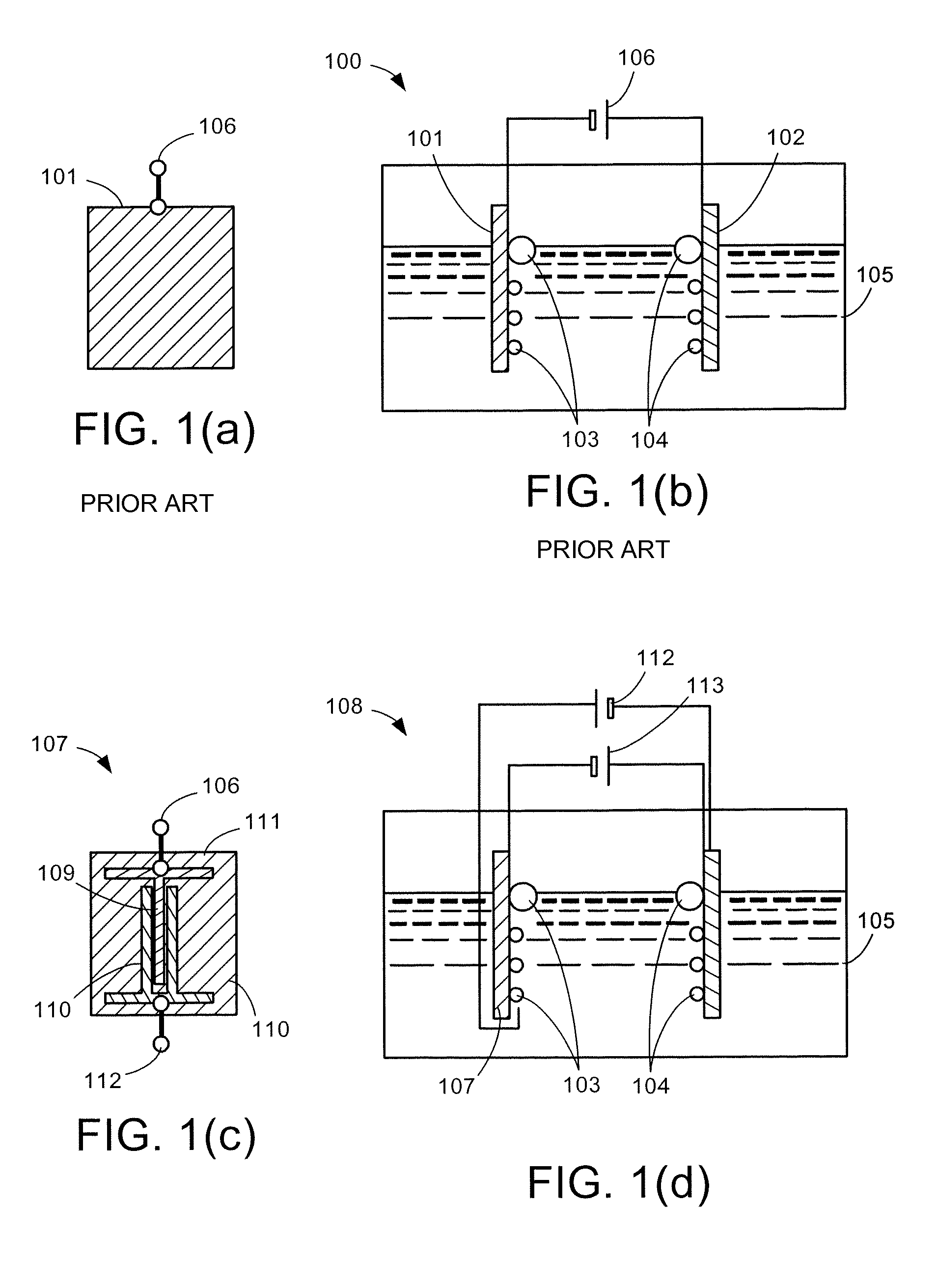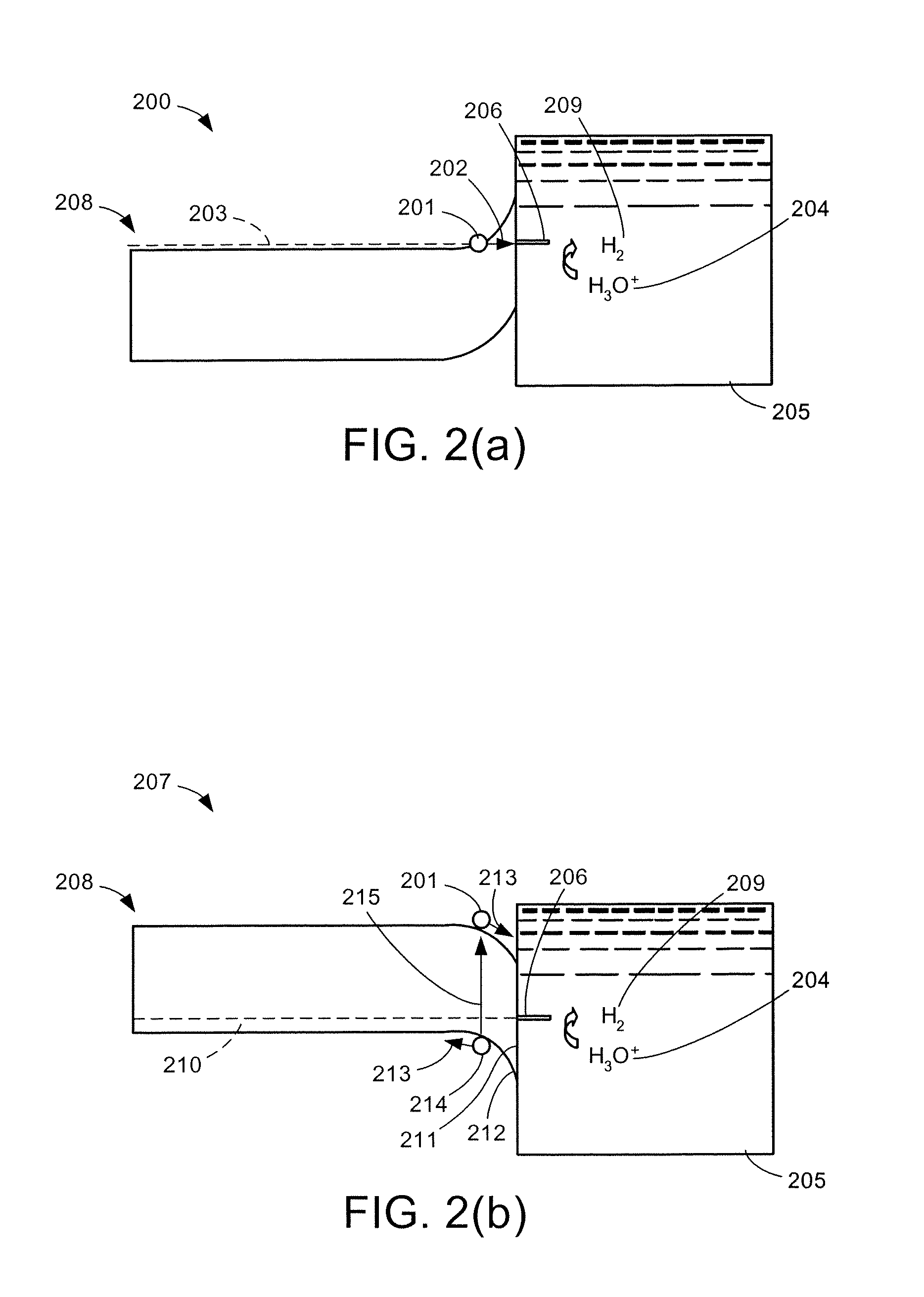Gated electrodes for electrolysis and electrosynthesis
a gated electrode and electrolysis technology, applied in the direction of electrochemical machining apparatus, energy input, metal-working apparatus, etc., can solve the problems of oxidation, metal cathodes are not efficient photocathodes, nano-structured coatings do not significantly improve performance, etc., to achieve the effect of enhancing these effects
- Summary
- Abstract
- Description
- Claims
- Application Information
AI Technical Summary
Benefits of technology
Problems solved by technology
Method used
Image
Examples
Embodiment Construction
[0042]In the following description of the preferred embodiment, reference is made to the accompanying drawings which form a part hereof, and in which is shown by way of illustration a specific embodiment in which the invention may be practiced. It is to be understood that other embodiments may be utilized and structural changes may be made without departing from the scope of the present invention.
Overview
[0043]The present disclosure is about gated electrodes, wherein an electrode of the electrochemical or photo-electrochemical cell is replaced by an appropriate gated electrode that is comprised of two electrodes, with the gate electrode biased appropriately with respect to the working electrode. The dominant current flow at a gated electrode would be through the working electrode. The gate electrode, which is in proximity of the working electrode, is for the modification of electric charge, field and potential in the electrolyte next to the working electrode. Remote gating with time...
PUM
| Property | Measurement | Unit |
|---|---|---|
| temperature | aaaaa | aaaaa |
| current | aaaaa | aaaaa |
| electric charge | aaaaa | aaaaa |
Abstract
Description
Claims
Application Information
 Login to View More
Login to View More - R&D
- Intellectual Property
- Life Sciences
- Materials
- Tech Scout
- Unparalleled Data Quality
- Higher Quality Content
- 60% Fewer Hallucinations
Browse by: Latest US Patents, China's latest patents, Technical Efficacy Thesaurus, Application Domain, Technology Topic, Popular Technical Reports.
© 2025 PatSnap. All rights reserved.Legal|Privacy policy|Modern Slavery Act Transparency Statement|Sitemap|About US| Contact US: help@patsnap.com



